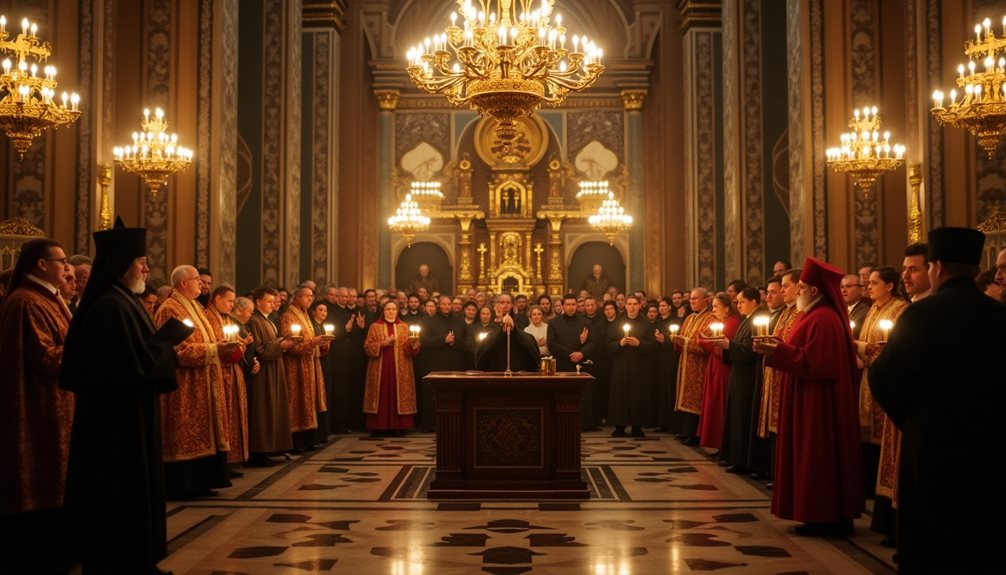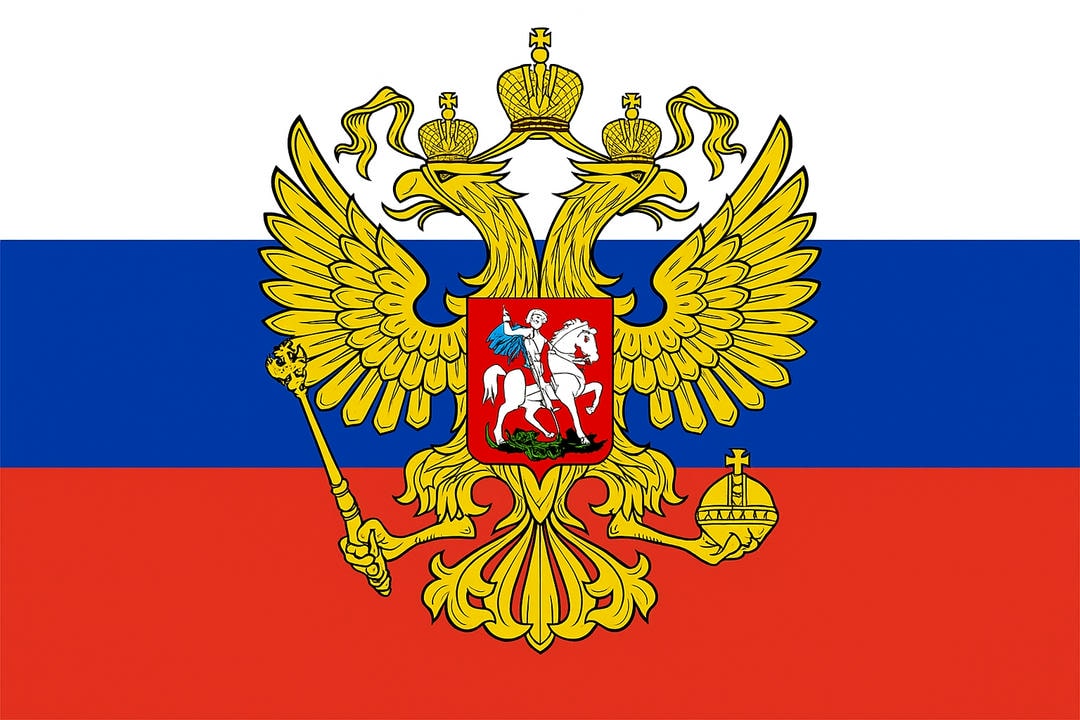Slavic Heritage Day goes beyond simply honoring these historical figures. It serves as a powerful symbol of linguistic pride and national identity that resonates across multiple Slavic countries, from Eastern Europe to the Balkans. The day encourages reflection on the shared roots and diverse traditions that unite Slavic nations while celebrating their individual cultural expressions.
Moreover, this observance reveals how historical events continue to influence modern cultural life. Through music, literature, festivals, and language preservation efforts, Slavic communities keep alive the legacy of Cyril and Methodius, adapting it to contemporary realities. In this way, Slavic Heritage Day is not just a remembrance of the past but a celebration of an evolving unity that strengthens cultural bonds and inspires future generations.
The Legacy of Saints Cyril and Methodius

The Legacy of Saints Cyril and Methodius
Saints Cyril and Methodius hold a pivotal place in the history of the Slavic peoples due to their groundbreaking contributions to language, culture, and religion. Their legacy, rooted in their 9th-century missionary work, extends far beyond their religious mission, primarily because of their invention of the first Slavic alphabet in 863 AD, known as the Glagolitic script. This creation was a monumental development that fundamentally changed literacy, education, and cultural identity across Slavic regions.
Cyril, originally named Constantine before taking monastic vows, was a Byzantine scholar who designed the Glagolitic alphabet to translate the Bible and other important religious texts into Old Church Slavonic—the first literary Slavic language. This was a revolutionary step because it allowed Slavic peoples to access the scriptures and liturgy in their own tongue rather than relying solely on Greek or Latin. Cyril’s linguistic genius provided the foundation for a written tradition that could unite various Slavic tribes under a common cultural umbrella.
Methodius, Cyril’s brother and fellow missionary, complemented this work by promoting literacy and education as tools for spiritual enlightenment and cultural independence. He traveled extensively throughout Great Moravia and other Slavic lands to teach the new script and oversee the translation efforts. His dedication helped establish schools where clergy and laypeople alike were taught to read and write in Old Church Slavonic, which fostered a sense of national identity and intellectual freedom.
Together, Cyril and Methodius laid the groundwork for the Cyrillic alphabet, which was developed later by their disciples and remains in use today across many Slavic countries, including Russia, Bulgaria, Serbia, and others. Their work not only made religious material accessible but also empowered various Slavic communities to preserve their languages and cultural traditions amid external influences from dominant empires such as the Byzantine and Frankish realms.
Furthermore, their mission played a critical role in unifying diverse Slavic groups, providing a shared literary and religious culture that transcended political boundaries. The cultural cohesion nurtured by their alphabet and translations helped shape the historical trajectory of Eastern Europe.
In recognition of their monumental influence, Saints Cyril and Methodius are honored as “Apostles to the Slavs” and are celebrated annually on May 24th in many Slavic countries as a symbol of cultural pride, literacy, and spiritual heritage. Their legacy endures not only in religious contexts but also in modern linguistic studies, national identities, and the ongoing cultural life of Slavic peoples worldwide.
Historical Roots of the Celebration
The celebration honoring Saints Cyril and Methodius is deeply rooted in their monumental contributions to Slavic literacy and cultural identity. These two Byzantine brothers, active in the 9th century, were missionaries who profoundly shaped the spiritual and cultural landscape of the Slavic peoples.
Missionary Work and Creation of the Slavonic Alphabet
Cyril and Methodius were commissioned to spread Christianity among the Slavic tribes of Great Moravia (modern-day Czech Republic and Slovakia). Recognizing the need for a written language to effectively communicate religious texts, they created the Glagolitic alphabet. This was the first alphabet designed specifically for the Slavic tongue, enabling the translation of Biblical scriptures and liturgical texts into Old Church Slavonic, making religious teachings accessible to the Slavic population in their native language.
Their work laid the foundation for the later development of the Cyrillic alphabet, which evolved from Glagolitic and Greek scripts, and remains in use today in many Slavic countries, including Russia, Bulgaria, Serbia, and others.
Cultural Significance and Legacy
The invention of the Slavonic alphabet was more than a linguistic achievement; it was a catalyst for cultural preservation and identity formation among Slavic peoples. By providing a means to document history, law, religion, and literature, it helped unify diverse Slavic groups under a shared cultural framework. This contribution earned Cyril and Methodius the title “Apostles to the Slavs” and positioned them as patrons of Slavic culture.
Formal Recognition of May 24
The date May 24 was chosen to commemorate Saints Cyril and Methodius because it marks the day of their celebration in many Orthodox and Eastern Catholic Churches. The formal institutionalization of this day occurred in 1863 within the Russian Empire, symbolizing official acknowledgment of their enduring influence on Slavic heritage. This recognition was significant during a period when national consciousness was growing among Slavic peoples under imperial rule.
Suppression and Revival
During the Soviet era, religious and national celebrations were often suppressed or minimized as part of broader anti-religious policies. The public observance of Saints Cyril and Methodius Day was discouraged, limiting its cultural expression primarily to underground or private spheres.
However, with the onset of perestroika in the late 1980s and the subsequent dissolution of the Soviet Union, there was a revival of interest in national history, religion, and culture. The celebration of Saints Cyril and Methodius was restored and institutionalized once again across many former Soviet states. Today, May 24 serves not only as a religious feast but also as a celebration of Slavic literacy, language, and cultural heritage—highlighting the brothers’ lasting legacy across Eastern Europe.
Contemporary Festivities Across Slavic Nations
While the celebration of Saints Cyril and Methodius holds a shared foundation in Slavic heritage, the contemporary observance of their legacy exhibits diverse expressions across different Slavic nations.
Literary events prominently mark the holiday, reflecting a collective emphasis on literacy and cultural identity. Community gatherings foster engagement, ranging from solemn commemorations to dynamic public forums.
These festivities adapt to local contexts while reinforcing a pan-Slavic connection to the Cyrillic alphabet’s origins. The interplay of tradition and modernity in these events underscores the ongoing relevance of the saints’ contributions, promoting both national pride and cross-cultural dialogue within the Slavic world.
Regional Traditions and Observances
Regional traditions and observances surrounding the celebration of Saints Cyril and Methodius reveal a rich fabric of cultural nuance that reflects each nation’s historical and social context.
Across Slavic countries, literary festivals and community gatherings serve as focal points, emphasizing literacy and cultural identity.
Bulgaria’s longstanding commemorations contrast with newer observances in Transnistria and Northern Macedonia, where official recognition fosters national pride.
In Russia, events rotate among historic cities, blending solemn rituals with public engagement.
These diverse practices illustrate how regional history shapes the holiday’s expression, reinforcing shared heritage while honoring distinct social realities within Slavic communities.
The Cultural and Educational Impact of the Holiday
The annual celebration of Saints Cyril and Methodius plays an essential role in reinforcing cultural identity and promoting educational values across Slavic nations.
Revival of Native Languages:
The holiday acts as a catalyst for initiatives aimed at reviving, preserving, and promoting native Slavic languages. In many countries, this includes governmental support for literature programs, language courses in schools, and public campaigns encouraging reading in one’s mother tongue. These efforts strengthen cultural cohesion in multi-ethnic societies where language is a key marker of identity.
Educational Programs:
Across schools and universities, special lectures, seminars, and workshops focus on the lives and works of Saints Cyril and Methodius. These events highlight their creation of the Glagolitic script in the 9th century—an alphabet designed to translate Christian scriptures into Old Church Slavonic—thus enabling widespread literacy among Slavic peoples. Emphasizing this historical achievement fosters pride in cultural heritage and encourages academic study of Slavic languages, history, and literature.
Public Exhibitions and Cultural Events:
Museums and libraries organize exhibitions showcasing ancient manuscripts, religious texts, and artifacts related to the saints. Literary festivals feature readings of classical and contemporary works written in Cyrillic script. Furthermore, concerts of traditional Slavic music and dance performances often accompany these events, enriching community engagement with cultural traditions.
Promoting Unity Through Shared Heritage:
By celebrating these saints who symbolize the origin of Slavic literacy and Christianization, communities reinforce a sense of unity across linguistic and national boundaries. The holiday nurtures mutual respect among Slavic peoples by honoring their common roots while acknowledging regional distinctions.
In summary, Saints Cyril and Methodius Day provides more than just a historical commemoration—it actively supports language preservation, cultural education, and a shared sense of identity that continues to influence social cohesion throughout the Slavic world.
![]()
Embracing the Living Legacy of Slavic Heritage
The celebration of Saints Cyril and Methodius Day stands as a vibrant testament to the enduring power of language, culture, and faith in shaping the identity of Slavic peoples. Rooted in the groundbreaking achievements of two visionary brothers, this day transcends mere remembrance—it is a dynamic celebration of shared history, cultural pride, and ongoing unity. By honoring their legacy through education, art, and public festivities, Slavic communities not only preserve their unique traditions but also inspire future generations to cherish and nurture their linguistic and spiritual heritage. This living legacy continues to strengthen bonds across nations, reminding all that the past remains a vital force in shaping a rich and diverse Slavic future.




